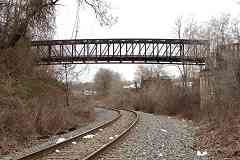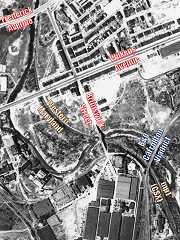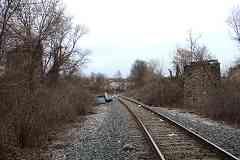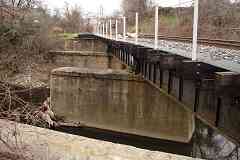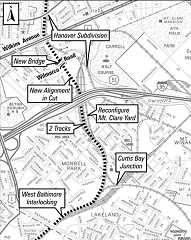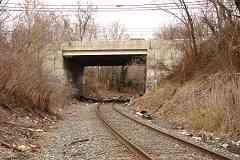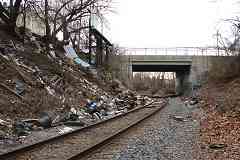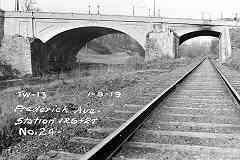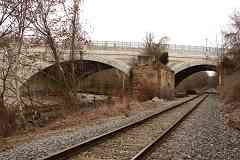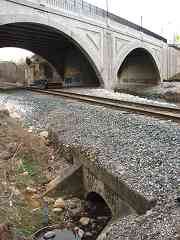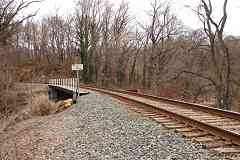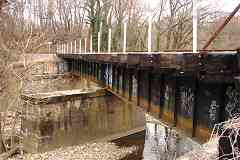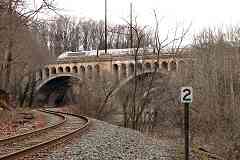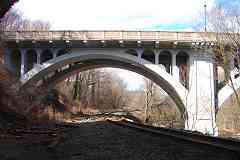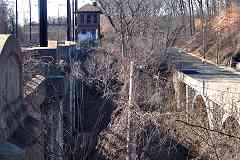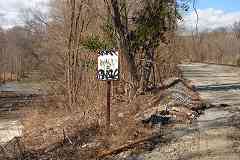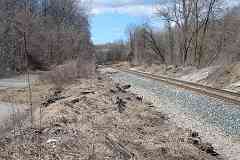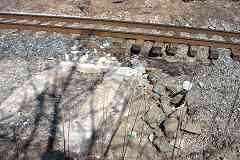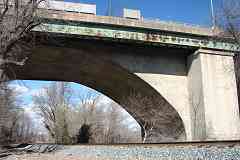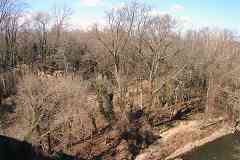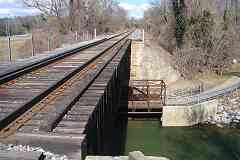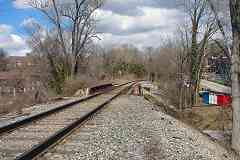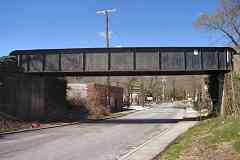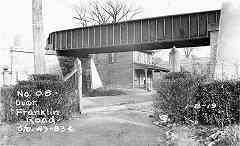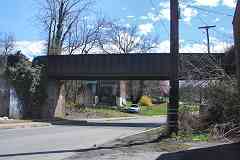|
Frederick Avenue led to the Maryland town of Frederick and the first
National Road to the west that originated during the early 1800s. As such,
various incarnations of bridges have spanned the Gwynns Falls here ever
since, including a covered one, as well as an iron one created by Wendell
Bollman, the man who crafted iron railroad bridges for B&O. Those
bridges sat atop the stone pillars in the foreground.
Exactly when the bridge location shifted upstream onto adjacent pillars is
uncertain. State records indicate a bridge was built here in 1930. The
bridge in this photo looks identical to the one present after 1930, but
this photo purports to date from 1919. So, one of the following is true:
1) the state's 1930 date is wrong, 2) a pre-1930 bridge was replaced or
rebuilt in 1930 to look the same, or 3) the photo date is wrong. By
the time of this photo, whenever it was snapped, billowing exhaust from
steam engines had left smoky marks on the structure.
Links:
covered bridge info,
status report,
2013 teardown with train
|
